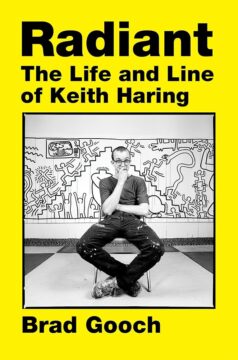Jessica Ferri at the LA Times:
 While modern audiences might be more likely to understand the import of these themes, many critics at the time discounted Haring’s work as “fast food,” as one put it, adding, “It’s a good time, it’s boogieing on a Saturday night, it’s alive, but great, no.” One curator blamed Haring’s commercial appeal for the reluctance to take his art seriously, saying, “I think Haring was so successful that other artists could not forgive him.” Gallerist Jeffrey Deitch pointed out that most artists enjoying Haring’s level of financial success would have been churning out even more sellable work. But Haring was committed to public projects such as murals, which he did for little or no compensation.
While modern audiences might be more likely to understand the import of these themes, many critics at the time discounted Haring’s work as “fast food,” as one put it, adding, “It’s a good time, it’s boogieing on a Saturday night, it’s alive, but great, no.” One curator blamed Haring’s commercial appeal for the reluctance to take his art seriously, saying, “I think Haring was so successful that other artists could not forgive him.” Gallerist Jeffrey Deitch pointed out that most artists enjoying Haring’s level of financial success would have been churning out even more sellable work. But Haring was committed to public projects such as murals, which he did for little or no compensation.
In 1987, during a period of extensive travel, Haring noticed that he was short of breath. The following year, while in Tokyo, he discovered a small purple spot on his leg that, when he returned to New York, was confirmed as Kaposi’s sarcoma. Haring told almost no one of his diagnosis in July 1988. In August, Basquiat died of a heroin overdose at 27. Writer Glenn O’Brien had once asked Basquiat who his favorite painter of his own generation was. “He didn’t hesitate, but said, ‘Keith Haring.’”
more here.
